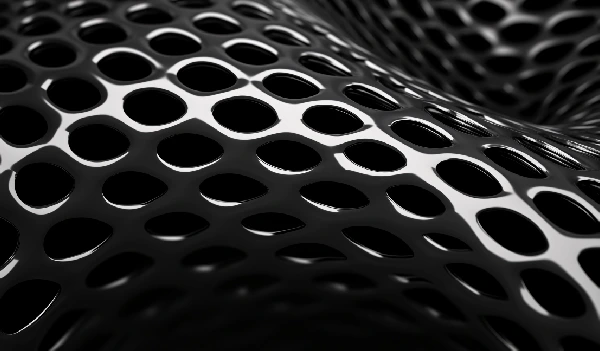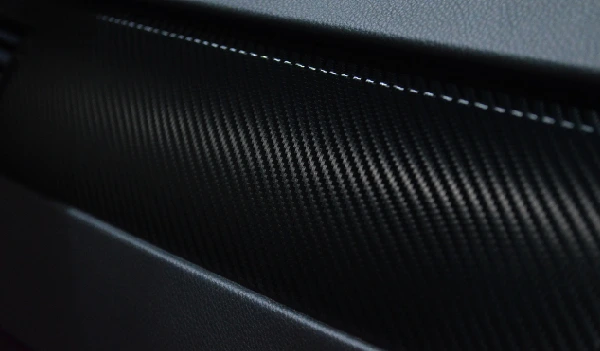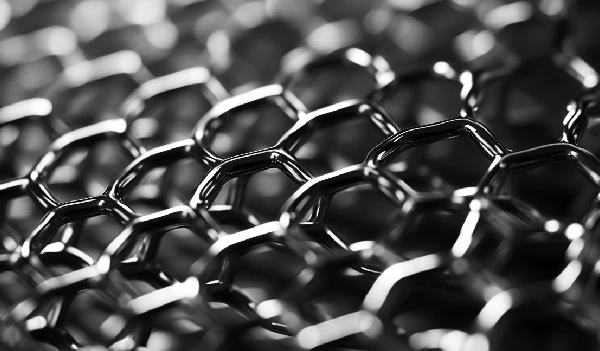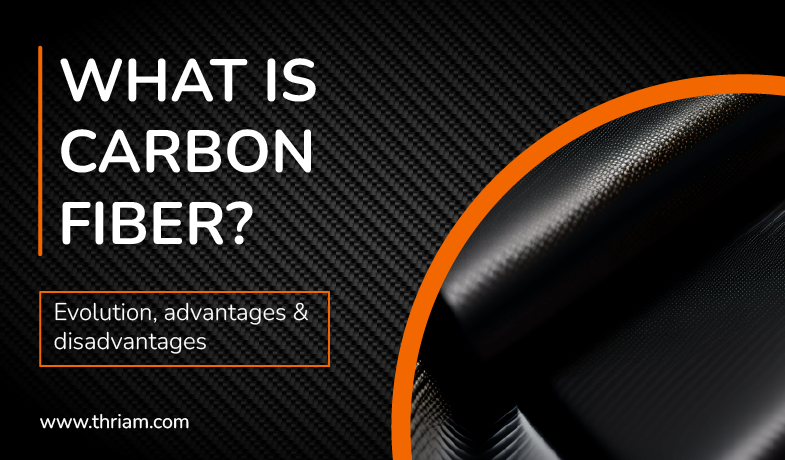Carbon Fiber : Sustainable revolution transforming the automotive landscape

The automotive industry is experiencing a revolutionary change with the introduction of carbon fiber. This lightweight and strong material is transforming the way vehicles are manufactured and designed.
What is carbon fiber?

Carbon fiber is a lightweight and incredibly strong material that has gained significant recognition and popularity across various industries. It is composed of thin strands of carbon atoms tightly woven together. These carbon fibers are then combined with a polymer resin to create a composite material that is both durable and versatile.
One of the key characteristics of carbon fiber is its exceptional strength-to-weight ratio. It is significantly lighter and yet stronger than traditional materials such as steel or aluminum. This property makes carbon fiber an ideal choice for applications where weight reduction is critical, such as in the aerospace and automotive industries.
In addition to its strength, carbon fiber is also known for its rigidity and resistance to corrosion. It has excellent thermal conductivity and can withstand high temperatures, making it suitable for use in demanding environments.
Carbon fiber's versatility is another reason for its increasing popularity. Its unique properties allow for complex shaping and molding, enabling designers to create intricately designed and aerodynamic components. This flexibility in design enhances performance and efficiency in various applications.
In this blog, we will explore the impact of carbon fiber on the automotive landscape
The Rise of Carbon Fiber in Automotive Manufacturing

The automotive industry is experiencing a significant shift with the rising prominence of carbon fiber in manufacturing. Carbon fiber, a lightweight and high-strength material, is revolutionizing the way vehicles are built and designed.
One of the key advantages of carbon fiber in automotive manufacturing is its remarkable weight reduction capabilities. Compared to traditional materials like steel and aluminum, carbon fiber is significantly lighter, resulting in improved fuel efficiency and handling. This weight reduction also enhances acceleration and overall performance, providing a thrilling driving experience for consumers.
In addition to its lightweight nature, carbon fiber's exceptional strength is another driving factor behind its increasing use in automotive manufacturing. Despite being lightweight, carbon fiber offers incredible rigidity and durability, ensuring the structural integrity of vehicles. This strength also contributes to improved safety, as carbon fiber parts efficiently absorb and dissipate impact energy in the event of a collision.
Unleashing the Potential of Carbon Fiber

The unique properties of carbon fiber enable designers to overcome limitations in vehicle design. Its high tensile strength allows for greater freedom in shaping and forming vehicle parts, resulting in innovative and aerodynamic designs. Furthermore, the lightweight nature of carbon fiber enhances maneuverability, handling, and braking, enhancing the driving experience for consumers.
Carbon Fiber's Impact on Vehicle Safety

Carbon fiber is playing a crucial role in enhancing vehicle safety across the automotive industry. The exceptional strength and rigidity of carbon fiber make it an ideal material for improving crashworthiness and protecting occupants in the event of a collision.
Carbon fiber parts effectively absorb and dissipate impact energy, reducing the force transferred to the vehicle's occupants. This means a lower risk of injury and potentially saving lives. Carbon fiber's resistance to rust and corrosion makes it a durable material, ensuring the longevity of vehicle safety features. Unlike traditional materials such as steel, carbon fiber is not susceptible to degradation caused by rust.
Due to its impact on vehicle safety, carbon fiber is increasingly being incorporated into various safety-critical components, such as chassis, body panels, and crash structures. This utilization of carbon fiber allows automakers to build safer vehicles without sacrificing performance or efficiency.
Sustainability and Environmental Benefits

Carbon fiber's lightweight property significantly reduces the overall weight of products in which it is used. This weight reduction plays an essential role in improving fuel efficiency in various sectors, including automotive and aerospace. Lighter vehicles require less energy to operate, resulting in reduced fuel consumption and lower carbon dioxide emissions, thus contributing to a greener and more sustainable transportation sector.
Carbon fiber production processes have the potential to emit lower levels of greenhouse gases compared to traditional materials. The energy required to manufacture carbon fiber is typically lower than that of metals like steel or aluminum. This energy efficiency, combined with advancements in manufacturing techniques, has led to reduced carbon emissions during the production phase.
Carbon fiber's durability enhances its sustainability profile. Carbon fiber components have a longer lifespan compared to their counterparts made from conventional materials. The material's resistance to corrosion and degradation means it requires less maintenance and replacement, resulting in a reduced amount of waste generated over time.
The recyclability of carbon fiber is improving. While recycling carbon fiber can be a complex and challenging process due to the binding resins, advancements are being made to develop more efficient recycling methods. Recycling carbon fiber not only reduces waste but also allows for the extraction and reuse of valuable carbon fiber strands, potentially lowering the need for virgin carbon fiber production.
The use of carbon fiber also has indirect environmental benefits. Its high strength properties allow for the design of lighter and more efficient structures, therefore reducing the need for additional materials. This, in turn, reduces resource consumption and lessens the environmental impact associated with the extraction and processing of raw materials.
Challenges and Future Outlook
While carbon fiber has shown tremendous potential, there are challenges that hinder its widespread adoption in the automotive industry. Cost remains a significant barrier, as carbon fiber production is currently more expensive compared to traditional materials. However, ongoing advancements in manufacturing techniques and increased demand are expected to drive down costs. Additionally, efforts to improve scalability and increase production capacity are underway to meet the growing demand for carbon fiber in automotive manufacturing.
Conclusion:
Carbon fiber is undeniably transforming the automotive landscape, offering numerous benefits including weight reduction, improved performance, enhanced safety, and environmental sustainability. As manufacturers continue to explore and refine the use of carbon fiber in vehicle production, we can expect to see even more exciting advancements in the near future. The automotive industry's shift towards carbon fiber signifies a significant step towards a more efficient, sustainable, and exciting future of transportation.



